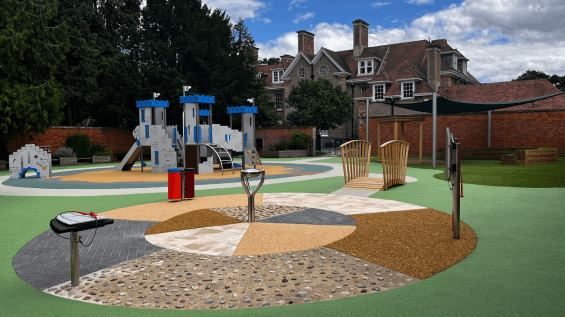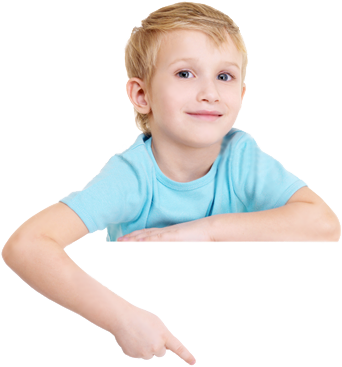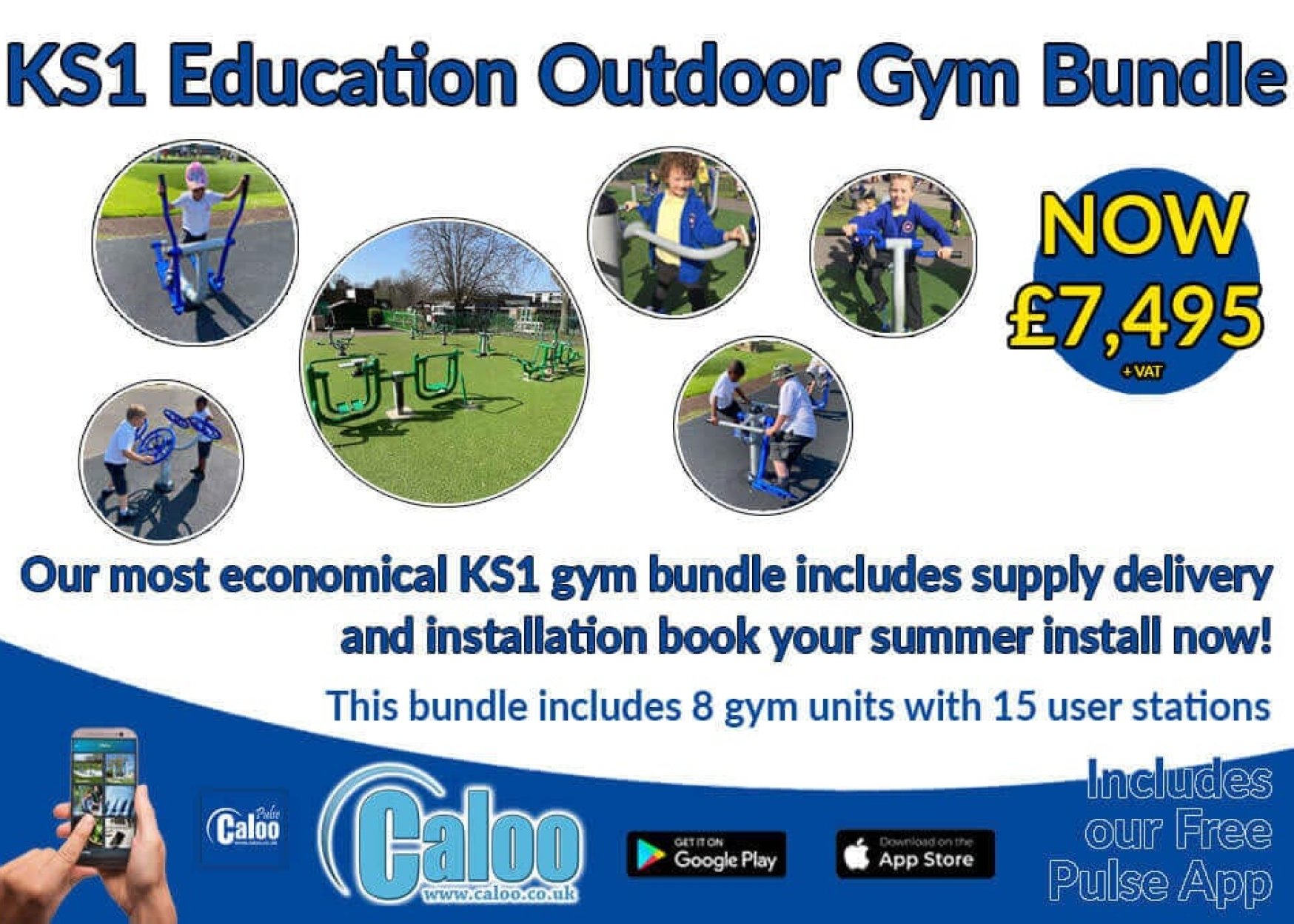
Oct

Playground Equipment for EYFS: Supporting the 7 Areas of Learning
Early Years Foundation Stage (EYFS) lays the groundwork for a child’s educational journey. At this stage, play is more than enjoyment; it is the primary way children learn about themselves, others, and the world around them. Well-designed playground equipment for EYFS helps schools and nurseries meet curriculum goals by offering opportunities for physical activity, creativity, and social interaction.
Well-designed playground equipment can support all seven areas of learning defined in the EYFS framework, helping children to develop language, build physical strength, grow socially and emotionally, and explore creativity. Outdoor spaces designed with EYFS goals in mind nurture curiosity, encourage confidence, and foster resilience. From sensory panels that spark communication to climbing frames that build balance and coordination, the right mix of equipment turns play into a foundation for lifelong learning.
What is EYFS Playground Equipment?
EYFS playground equipment refers to purpose-built outdoor units designed for children aged 0–5. Unlike equipment for older pupils, EYFS playgrounds focus on:
• Smaller climbing frames and balance and low-level trails for safe motor development.
• Sensory panels and tactile features to stimulate curiosity.
• Role-play units and themed structures to encourage creativity.
• Markings for numbers, letters, and shapes to support early literacy and numeracy.
• Quiet spaces with seating for personal and social growth.
The aim is to create outdoor environments that blend fun with learning, helping children meet developmental milestones while enjoying play.
1. Communication and Language
Developing communication and language is central in EYFS. Outdoor spaces provide opportunities for children to practise speaking, listening, and understanding.
• Role-play equipment such as playhouses or themed towers encourages children to invent stories, negotiate roles, and build vocabulary.
• Storytelling circles with benches or stages provide places for group discussion and active listening.
• Music walls and sound-making panels allow children to experiment with rhythm and sound, building auditory skills.
By offering these opportunities, playgrounds help children practise essential skills that underpin literacy and social interaction.
2. Physical Development
Physical development is one of the most visible benefits of outdoor play. Children need safe spaces to develop both gross and fine motor skills.
• Climbing frames and mini trim trails build strength, balance, and coordination.
• Swings and slides help with core stability and spatial awareness.
• Sand pits and water play tables promote fine motor control, hand–eye coordination, and grip strength, all of which are vital for handwriting readiness.
The UK Chief Medical Officers recommend at least 180 minutes of activity daily for children under 5 (UK CMO Guidelines, 2019). Playground equipment for EYFS ensures these targets are achievable in school and nursery environments.
3. Personal, Social and Emotional Development
Outdoor play encourages children to build confidence, manage emotions, and develop relationships.
• Group play units, such as see-saws or multi-user swings, teach turn-taking and cooperation.
• Imaginative spaces like play kitchens or pirate ships encourage empathy and role exploration.
• Quiet corners with benches or sensory features give children a space to retreat, helping them learn self-regulation.
Playgrounds also reduce isolation by bringing children together in a safe, engaging space. These interactions are essential for building social skills that support later learning.
4. Literacy
Literacy development begins long before formal reading and writing lessons. Outdoor spaces can make early literacy fun and interactive.
• Alphabet trails and letter panels help children recognise sounds and symbols.
• Story corners outdoors encourage children to listen, retell, and act out stories.
• Markings for phonics games link literacy to movement, reinforcing concepts through active play.
These playful experiences help children build confidence with words, setting the foundation for later success in reading and writing.
5. Mathematics
Mathematical thinking can also be nurtured in outdoor play.
• Number lines and hopscotch markings teach counting and sequencing.
• Shape puzzles and panels encourage recognition of patterns and spatial relationships.
• Water play with measuring containers introduces ideas of capacity and volume.
By embedding maths into play, children see numbers and problem-solving as part of everyday life, not just classroom exercises.
6. Understanding the World
EYFS encourages children to explore their environment and make sense of the world around them.
• Nature zones with planting beds or bug hotels encourage curiosity about living things.
• Sand and water areas help children learn about texture, flow, and cause-and-effect.
• Role-play equipment, such as shops or kitchens, reflects real-world experiences, supporting understanding of community and culture.
Outdoor play fosters a sense of discovery, sparking enquiry and encouraging children to ask questions.
7. Expressive Arts and Design
Creativity flourishes in outdoor environments where children have the freedom to explore and invent.
• Performance stages and musical panels support music, drama, and dance.
• Chalkboards and art walls give children a space to draw, write, and experiment with colour.
• Themed play equipment, such as castles or trains, inspires role play and storytelling.
Expressive play is vital for building imagination and problem-solving skills, both of which are linked to wider academic achievement.
How EYFS Playground Equipment Supports Schools and Nurseries
By aligning with the seven areas of learning, playground equipment for EYFS becomes more than a play tool; it is a resource for teaching and development.
• Holistic growth: Supports cognitive, social, and physical milestones.
• Curriculum alignment: Outdoor play directly contributes to EYFS objectives.
• Parental confidence: Families see visible investment in high-quality facilities.
• Inclusivity: Sensory panels, ramps, and ground-level play make playgrounds accessible to all children.
For schools and nurseries, these benefits create long-term value, helping to establish strong foundations for lifelong learning.
How Caloo Supports EYFS Playgrounds
Caloo has extensive experience in designing, installing, and maintaining playground equipment for EYFS.
• Consultation-led design: Every project begins with listening to staff to understand learning goals.
• Tailored solutions: From sensory play panels to clamber stacks, equipment is matched to developmental needs.
• Safe and compliant installations: All products meet BS EN standards, with surfacing that ensures accessibility and reduces injury risk.
• Ongoing support: Inspections, maintenance, and spare parts ensure playgrounds remain safe and effective for years to come.
By working with Caloo, nurseries and schools can create outdoor spaces that enrich early learning while ensuring safety and inclusivity.
FAQs
What is EYFS playground equipment?
EYFS playground equipment refers to outdoor structures designed for children aged 0–5, such as sensory panels, role play units, and small climbing frames, which support early development.
How does EYFS playground equipment support the seven areas of learning?
It provides activities that nurture communication, physical skills, social development, literacy, numeracy, environmental awareness, and creativity.
Why is outdoor play important in EYFS?
Play is the main way children learn in EYFS. Outdoor play encourages exploration, movement, and social interaction, all of which support curriculum goals.
Is EYFS playground equipment safe?
Yes. When installed by professional suppliers and maintained regularly, EYFS playgrounds meet BS EN safety standards.
How can nurseries and schools fund EYFS playground equipment?
Funding can come from school budgets, grants, community fundraising, or Section 106 agreements in local developments.
EYFS is a critical stage in a child’s development, and playgrounds are one of the most effective tools for supporting growth across the seven areas of learning. From communication to creativity, playground equipment for EYFS brings the curriculum to life in safe, engaging outdoor spaces.
For nurseries and schools planning to invest in new playgrounds, Caloo can help design and install equipment that meets educational goals while ensuring safety, inclusivity, and long-term value. Contact our team today to discuss tailored solutions for your setting.

















